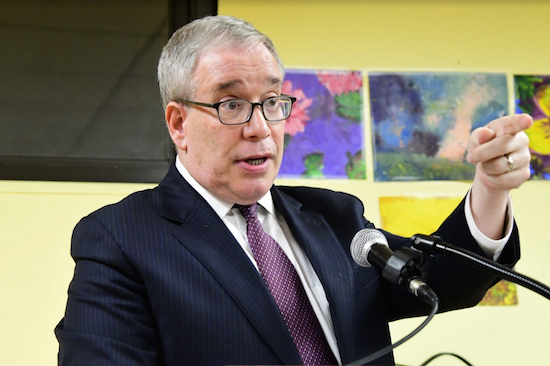Cobble Hill Association holds community forum with NYC Comptroller Scott Stringer
Residents Strategize Approach to Massive Development with Encouragement from Elected Officials

NYC Comptroller Scott Stringer. Eagle photos by Andy Katz
The Cobble Hill Association met with NYC Comptroller Scott Stringer, City Councilmember Brad Lander and state Assemblymember Jo Anne Simon at the Cobble Hill Health Center. On everyone’s mind at the Nov. 28 meeting were the potentially harmful effects of the new housing construction that is expected to add more than 1,000 units to one of Brooklyn’s smallest and oldest neighborhoods.
Of particular concern is the ongoing struggle between Fortis Property Group’s transformation of the lamented Long Island College Hospital into a series of market-rate developments called River Park. As currently envisioned, River Park will consist of seven properties. Some will be adapted from existing structures, while others will consist of entirely new ones.
